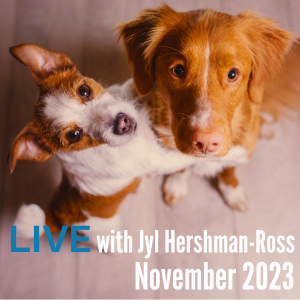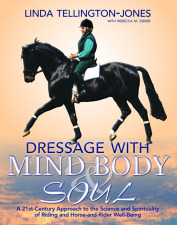IMPORTANT SHIPPING NOTICE! Thank you for your order! We will be out of the office April 20th through May 6th, and will resume shipping orders May 7th, 2024. Thank you Judy
Search Results
Your search for Learn More returned 16 categories and 61 items
Items
About Us > Our Teachers > Meet Linda > Accolades

Linda Inducted into 2007 Massage Therapy Hall of Fame
Linda Tellington-Jones' work has its roots in a philosophy that sees all beings - humans and animals alike - as reflections of a Divine Whole. The Tellington Method was first created four decades ago as a system of animal training, healing and communication that allows people to relate to animals in a deeper, more compassionate way - a way that furthers inter-species connection and honors the body, mind and spirit of both animals and their people. The Tellington Method utilizes a variety of techniques of touch, movement and body language to affect behavior, performance, and health, and to increase an animal's willingness and ability to learn in a painless and anxiety-free environment.
Linda's highly effective and revolutionary approach to working with animals brought her world wide recognition, and it was out of this success that Tellington TTouch for humans has arisen, emerging as an important addition to the increasingly respected world of alternative healing practices.
About Us > Our Teachers > Meet Our Instructors
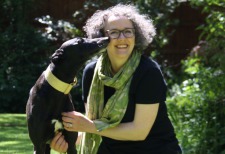
Rachel Ann Jackson
Rachel was born and raised in the North West of the UK. From a very young age she loved animals and especially wanted a dog, and at a very young age lived with three wonderful Pomeranians. She started horse riding at seven years old, horses are her second love and loves riding side saddle.
After qualifying as a primary school teacher and getting married, twenty-five years ago, her and her husband adopted a beautiful, sweet, two year old lurcher from a local rescue. It soon became clear that Fionn was petrified of other dogs, among other things. In her desire to help Fionn, Rachel started to learn about dog behaviour, completing a two-year dog trainer and behaviour course and then found Tellington TTouch® Training method. She describes this as her lightbulb moment, this was what she wanted to learn all about after she discovered how wonderful it was for Fionn. She booked straight away onto her first TTouch training in September 2000 and hasn’t looked back since.
Rachel went back to university in 2016 to study as a Veterinary Physiotherapist because she noticed that many dogs were struggling physically as well as behaviourally and qualified in 2018. Since then she has combined her work in both these modalities to enhance the physical and behavioural well-being of her own and client’s dogs. Rachel has a passion for the older dog, keeping them as fit, healthy and mobile as they can be. In addition to this, Rachel loves to teach guardians the importance of communication between them and their dogs and how to really listen to their canine friends.
Over the past twenty-four years Rachel has fostered many dogs, predominantly greyhounds and lurchers of varying sizes, shapes and ages. TTouch has benefitted each and every one of them. Sighthounds are her massive passion and there will always be a Jackson sighthound. Rachel volunteers at her local Dogs Trust and other rescues for many years. She uses TTouch techniques to help the more stressed and troubled dogs in their rescue be ready for their forever homes, with those already in homes, as well as many staff trainings.
Now Rachel gives private consultations and teaches workshops and trainings, in person and online nationally and internationally. She teaches the Tellington TTouch® Training Method and topics including pain and behaviour, proprioception and anatomy amongst others.
Rachel was made a Tellington TTouch® Method Instructor in 2021. She lives in South Manchester, UK with her husband, two greyhounds and a lurcher. You can learn more about Rachel and contact her via www.wellbalancedanimals-vetphysio.co.uk wellbalancedanimals@gmail.com
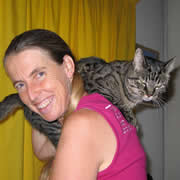
Lindy Dekker
Lindy started riding at age 10 in Stellenbosch near Cape Town, South Africa. The majority of the horses were rescued racehorses with problems. She was always surrounded by animals and her parental home was never without at least two dogs and two cats. She was given a rescued donkey in 1967 and had him for four years.
After studying Biochemistry, Microbiology and Genetics at university, Lindy moved with her husband Rick to Johannesburg in 1979. There she changed careers to become a computer programmer, and she is still involved in doing support for a consulting company.
In 1987 Lindy reached her dream and acquired her first horse 'Babyshoes' (ex-racehorse TB gelding) who stayed with her for nearly 21 years. Lindy has competed in dressage to Elementary level. In March, 1999 she attended a Natural Healing course for animals that included Reiki and Aromatherapy as well as an introduction to the Tellington TTouch® Method. She started her own therapy business in 2000. In January, 2001 she attended her first five-day TTouch® workshop for horses and hasn't looked back. She has been organizing the Tellington TTouch® practitioner training clinics in Johannesburg since 2002.
Now Lindy is a Tellington TTouch® Instructor for Companion Animals and for Horses. Besides organizing the practitioner training clinics for the Tellington TTouch® Method for horses, she gives clinics as well as private consultations for both horses and companion animals while traveling to all sorts of interesting places!
To learn more about Lindy, visit her website, www.lindydekker.com.
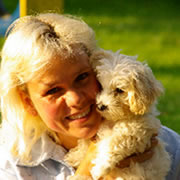
Karin Freiling
Karin Petra Freiling was born and grew up in Germany. Since her early childhood, it has been a matter of her heart to practice and communicate connection and oneness between humans and animals. She discovered multiple ways of communicating with animals. Karin did her Master's degree in Biology on the interaction between pygmy chimpanzees and zoo visitors in several zoos in Germany. In the mid '90s, she discovered the Tellington TTouch® Method as an essential way of interspecies connection and worked with TTouch® on the apes.
She is an instructor for TTouch® for You - the Tellington Method for Humans and also an Instructor for TTouch® for dogs, and teaches many workshops for adults and children. She has been responsible for the rehoming of countless dogs that were considered to be untrainable from a local animal shelter. She inspired Linda Tellington-Jones to develop a certification training for humans in Europe and worked closely with her to establish the first European "TTouch-for-You" Curriculum.
Her versatile skills include profound knowledge of whole-brain and brain friendly learning, from which she developed an improved method for optimized learning and reading. She is also a natural practitioner for psychotherapy, NLP Master, dog physiotherapist, animal behavioral therapist, and lecturer for brain fitness at a notable German academy. Now she is working on her Ph.D. about interspecies connection worldwide in order to help people to open their hearts again and reconnect with animals and nature.
She lives in the wonderful countryside of Northern Germany, together with her wonderful cooking husband, her own little zoo comprising five dogs, cats, pigs, rabbits, chicken and always several animals for physical and behavioral therapy. Children love to learn TTouch® with these various species at her place and learn to interact in a respectful and loving way. For more information about Karin visit her website at www.viasolaris.de. Contact Karin Freiling at karin@karinpetrafreiling.de.
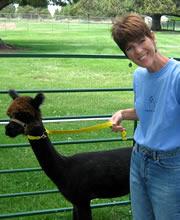
Marty McGee Bennett
Marty’s first llama jumped off the back of a pickup truck and into her heart in 1981. Since then Marty has devoted her professional life to the well being of llamas and alpacas and the education of camelid enthusiasts. After attending her first TTouch® demonstration in 1985 Marty attached herself to Linda for the next ten years learning the work with horses and adapting it for camelids.
In addition to her studies with Linda, Marty brings a variety of experience and qualifications to her work with camelids, including a B.S. degree in Animal Behavior and a professional background with fiber. This combination makes "Camelidynamics" the world’s most popular, and enduring training/handling system for camelids. Marty has taught the principles of camelid handling and the TTouch® to veterinarians and veterinary students at veterinary schools around the county and was the only non-DVM invited to contribute to the Veterinary Clinics of North America series on Camelids.
Her books (including one co-authored with Linda), videos and training clinics have helped thousands of llama and alpaca owners more fully understand, appreciate and enjoy this magical animal. Marty’s most recent book "The Camelid Companion" published in 2001 has received rave reviews in publications worldwide.
Conducting hundreds of clinics in North America and around the world including numerous trips to Australia, New Zealand and Europe have kept Marty on the road for much of the past 30 years. Marty her husband Brad live in New Smyrna Beach Florida and Marty still travels the world sharing her expertise on handling llamas and alpacas without fear or force. For more information about Marty, clinics, and products for camelids including a halter that is safe comfortable and effective for refined leading, log-in to Marty's websie
About Us > Research & Studies
Horse and Human 1984 Mind Mirror Study
Study of TTouch® with Anna Wise
Boulder Institute of Biofeedback, Boulder, Colorado
During this study the Mind Mirror showed activation of all four brain waves in both hemispheres, illustrating how TTouch activates both the logical and intuitive parts of the brain.
News from Linda
(Reprinted from TTEAM Connections Newsletter, February 2003)
If you've done much work with TTEAM and TTouch® you have most likely discovered the benefits for animals - not only for horses, but also for dogs, cats, small critters, zoo animals and wildlife rescue. You may have discovered improvements in health and well-being, a reduction in stress, and often, miraculous changes in behavior. And in horses and dogs you will have been rewarded by enhanced performance and a more flexible, intelligent four-legged friend. Many, who work with TTouch®, report an unexpected deepening of relationship that gives you the feeling you are Dr. Doolittle with the ability to communicate without words, and understand each other in a way you didn't think possible.
However, what is often unrecognized or unspoken, are the effects on the mensch. That means you! In this work there is often experienced a transformation in the people using TTEAM and TTouch® as well as their animals. We become more flexible and balanced mentally and physically, as well as emotionally. Many adults report a sense feeling of being smarter and more confident.
In classes of school children practicing TTouch® on their companion animals, teachers and parents describe similar changes - improved ability to focus and concentrate (just like horses and dogs) with heightened confidence and more tolerance. Children with a tendency to lose their tempers or bully other kids increase self-control and another level of understanding that allows them to adapt and be less reactive. I believe TTouch® teaches children what I call "compassionate empowerment®".
What causes these transformational changes in the two-leggeds? I believe the reasons are two-fold.
1 . TTEAM and TTouch® activate both hemispheres of the brain-resulting in Whole Brain learning. The left side of the brain is commonly referred to as the logical side, and the right side is thought of as the creative or intuitive side, although in reality that is not so. The brain is actually an integrated whole. The left hemisphere is more linear and the right is oriented to spatial issues and understanding the big picture.
You wonder how TTouch® affects the whole brain?
Each time you push the skin in a circle imagining the face of a clock, the intuitive side is engaged, because imagining or visualizing as well as the actual movement have to do with the intuitive. When you "see in your mind's eye" the numbers on the clock, the logical is activated because numbers have to do with logical thinking.
When you're practicing leading exercises imagining the "Elegant Elephant's" trunk as the end of your "wand" or whip, the movement itself, and holding the wand and chain in both hands, affects the right brain. And the logical way of holding the wand and chain in two hands awakens the thinking side.
2. The second indication of this whole brain effect comes from the two studies I did in the summers of 1987 and 1988 in cooperation with Anna Wise of the Boulder Institute of Biofeedback. Working with a "Mind Mirror" developed by her mentor, British psycho biologist and biophysicist Maxwell Cade, produced some fascinating results. The Mind Mirror is an EEG that differs from the traditional EEG in that it used spectral analysis to simultaneously measure eleven different frequencies in each hemisphere of the brain. Unlike the normal EEG it has the unique ability to measure beta, alpha, theta and delta brain waves in both hemispheres of the brain.
We measured over a dozen students to determine their brain wave activity while being TTouched, rubbed, petted and massaged. Surprising was the fact that consistently, whether our students were being TTouched or TTouching a horse or a person, there was an activation of all four brain waves -beta, alpha, theta and delta - in both sides of the brain. When the person being measured was petted, stroked, rubbed or massaged, the relaxing alpha brainwave pattern was present, but never beta - the problem solving potential. Only with the circular touches were the beta brainwaves present.
As you may already know, we have email discussion lists for TTEAM and TTouch certified practitioners that are hosted by Maggie Moyer, Peggy Rouse and Judi Trusky, bless their buttons!! The discussions are often fascinating and educational, and sometimes there is a question directed to me. The following question that arrived over the Internet could be of interest and help to you.
Carol Bryant, a Tellington TTouch Apprentice in Oz (Australia) wrote the following. Stop! I need to know more about the "Mind Circles" you wrote about. What are mind circles? Are the TTouch circles done mentally on animals you are unable to touch and if so, can you tell me a little more about.
Hi Carole, Yes, these are circles done in the mind, directed specifically where you want them. We have some fascinating cases of beneficial effects which are described in my new TTouch book for humans. Until the book is published, just begin by visualizing them. I've used these imaginary Mind Circles in the air a few feet away from a terrified, aggressive tiger while visualizing/imagining that they were being done directly on the tiger's body and I could see a change occur right in front of my eyes. In the case of the snow leopard reported by Dr. Isenbugel in the forward to my Tellington TTouch book, I imagined doing circles on the second snow leopard who was watching me work her sister. The snow leopard I worked on, and the cub mate I visualized working on, recovered overnight from a respiratory disease that the zoo people expected the leopards to die from. You can visualize the circles while in the presence of an animal, or you can imagine you are with an animal that is not in your presence, and have this help. In the memory of Jonathan Livingston Seagull asking why seagulls can fly the answer is: "They think they can." Enjoy the journey!
So the next time you head out to the barn remember that TTouching your horse a few minutes a day can reduce your stress, clear your mind, deepen the connection with your horse and dog, and make you smarter. That's why the phrase "The Touch That Teaches" came into being.
Background Information
Follow-up to "News from Linda"
The February, 2003 TTEAM newsletter prompted several people to ask me for more information about the Mind Mirror studies. The most common question was asked about the difference between the Mind Mirror measurements of brain waves and standard EEG's. Here are some more details.
In the summers of 1987 and 1988 Linda worked with Anna Wise, founder of the Biofeedback Institute of Boulder, Colorado. After monitoring Linda's brain waves of while working with TTouch and discovering that she was working in the awakened mind state, Anna thought it would be interesting to check out TTouch students to see if they would have these same brainwave states.
Anna had worked with Maxwell Cade in England for 8 years before coming to the United States to continue her work with people using the Mind Mirror to develop insight, healing and creativity.
The following notes are exerts from The Anna Wise Center for Awakened Mind Training website and from her first book, The High Performance Mind: Mastering Brainwaves for Insight, Healing, and Creativity (Tarcher/Putnam, 1996, 271 pages)
There is major difference in EEG machines developed for medical use for diagnosis of brain dysfunction. The use of EEG to understand the pathology of the brain has been very thoroughly explored over the last few decades. The Mind Mirror was developed by Maxwell Cade to study states of consciousness.
"The study of states of consciousness was undertaken by C. Maxwell Cade, a distinguished British psychobiologist and biophysicist and one of the few nonmedical members of the Royal Society of Medicine, and Geoffrey Blundell, an electronics expert in the late 70s. They studied the brainwave states of yogis, swamis, healers, ministers, and masters of many traditions to develop the Mind Mirror series of educational EEGs. The process was interactive – with many revisions to the hardware as Cade and Blundell discovered how to measure brainwave states that correlate to subjective states of mind. What emerged was an "awakened mind" brainwave pattern. Cade continued to find confirmation of this lucid state in the highly evolved minds that he studied, and learned how to help his students develop it. (p. 11)
"The high-performance mind – the awakened mind possesses a potential for using optimum states of consciousness for greater creativity; self-healing; better general health, relaxation, and stress management; solving emotional problems; more productivity in the workplace; understanding and improving relationships; greater self-knowledge; and spiritual development.
This state of mind is clearer, sharper, quicker, and more flexible than ordinary states. Thinking feels fluid rather than rigid. Emotions become more available and understandable, easier to work with and transform. Information flows more easily between the conscious, subconscious, and unconscious levels. Intuition, insight, and empathy increase and become more integrated into normal consciousness. With an awakened mind, it becomes easier to visualize and imagine, and to apply this increased imagination to one's creative processes in many areas." (p. 2)
Anna Wise's Description of the Brain Wave Functions:
"BETA is your normal thinking state, your active external awareness and thought process. Without beta you would not be able to function in the outside world.
ALPHA brainwaves are the brainwaves of relaxed detached awareness, visualization, sensory imagery and light reverie. Alpha is the gateway to meditation and provides a bridge between the conscious and the subconscious mind.
THETA brainwaves are the subconscious mind. Theta is present in dreaming sleep and provides the experience of deep meditation when you meditate. Theta also contains the storehouse of creative inspiration and is where you often have your spiritual connection. Theta provides the peak in the peak experience.
DELTA brainwaves are your unconscious mind, the sleep state, but when present in combination with other waves in a waking state, Delta acts as a form of radar – seeking out information – reaching out to understand on the deepest unconscious level things that we can't understand through thought process. Delta provides intuition, empathetic attunement, and instinctual insight."
"Someone in the Awakened Mind brainwave state (specific activation of beta, alpha, theta and delta in both hemispheres) has access to the unconscious empathy, intuition, and radar of the delta waves, the subconscious creative storehouse, inspiration and spiritual connection of the theta waves, the bridging capacity, lucidity and vividness of imagery, and relaxed detached awareness of the alpha waves, and the ability to consciously process thoughts in beta – all at the same time!"
"The work I have done with interspecies communication and brainwaves involves horses and their riders or trainers. I fell into this work by accident when I met Linda Tellington-Jones. The first time she came to me for a brainwave profile I monitored her while working on people. In this state she produced a form of awakened mind brainwave pattern that was heavily weighted with theta brainwaves.
"I was interested to know if her students had a similar pattern, so we set up a test during one of her workshops at a Colorado ranch. I observed that all of the students who had studied TTouch over a period of time tended to have strong theta and delta brainwaves in a normal resting waking state. Six out of the eleven people I measured had near awakened mind patterns in the left hemisphere, and one person had an awakened mind as coherent as Tellington-Jones'."
Our next step was obviously to attempt to monitor horses' brainwaves and then to see if we could observe any effect from TTouch. We fond that the basic resting state of the horses was primarily theta and delta with occasional flares of alpha. When TTouch was administered we got an activation of all four categories of brainwaves on the horses. We say that alpha especially was consistently activated during TTouch, as well as some beta.
I simultaneously monitored the brainwaves of Tellington-Jones and a horse she was working on, and found a high level of entrainment occurring between the horse and the trainer.
Perhaps the most startling experience that we had took place while working with a two-year-old thoroughbred mare that the owner thought was crazy. Initially, this horse had scattered brainwaves and out-of-control, high-amplitude flares. She had exceedingly strong theta and delta and not as much alpha and beta as we thought there should be, according to the other horses' brainwaves. Tellington-Jones then spent some time doing TTouch on her.
Afterward I was standing in front of a group of people talking about our discoveries and discussing this particular horse's difficulties. I explained that this horse could produce only theta and delta and was unable to produce alpha – whereupon the horse immediately produced strong alpha. When everyone laughed, I said, "O.K., but she can't produce beta." When she immediately produced beta, no one laughed, because our mouths were all open! Time prevented us from experimenting further with this particular horse. I still wonder what would have happened if I had said "O.K., but she still can't produce an awakened mind." (p. 213)
These studies on multiple horses on two separate occasions were fascinating from the point of view of considering that horses demonstrated an activation of beta – indicating logical thinking in the mind's of humans.
However, the brainwave studies done on TTouch students were even more interesting to me than the results shown with horses.
The Mind Mirror showed a consistent activation of all four brain waves in both hemispheres of the people doing TTouch and those being TTouched. It is my belief that this explains the reports from people TTouching their horses, dogs, cats, other animals as well as two-leggeds, that they feel more alive, more balanced emotionally as well as physically, more focused, happier. This has been true for both children and adults. So that the time adults spend TTouching their animals is as much benefit to them as to their animals – in addition to the wonderful bonding and opening of the heart that occurs.
It has been demonstrated that activation of both hemispheres of the brain– to include both logical thinking and intuitive knowing– is important for "Whole Brain Learning". TTouch® can be a powerful tool for this enhancement and at the same time healing for the body, mind and soul.
Anna and I have been in discussion regarding further studies and hope to get together later this year. My vision is to measure the brain waves of children TTouching their companion animals. I believe this would be a powerful tool for Whole Brain Learning and "High TTouch" in this age of "High Tech". With TTouch children can learn "compassionate empowerment" and a sense of kindness that is sorely needed in our modern world.
Aloha, LTJ
NOTE: TTEAM is an acronym of "Tellington TTouch® Equine Awareness Method." Since this article was written, the brand name for all the facets of the TTouch® organization is Tellington TTouch® Training.
Dog 2013 Integrating the Tellington TTouch® Method in Guide Dog Training
Integrating the Tellington TTouch® Method in Guide Dog Training
by Janice K. F. Lloyd and Elizabeth Roe at the School of Veterinary and Biomedical Sciences, James Cook University, Townsville, QLD 4811, Australia
The Tellington TTouch® method is used to reduce stress and relax animals so they can learn more effectively. It aims to increase an animal's body awareness and balance by using a combination of techniques that include specific touches, body wraps and leading (movement) exercises. This article discusses the method and its potential role in guide dog training.
Read More (Note! You'll need Adobe Acrobat Reader to view it.)
Events
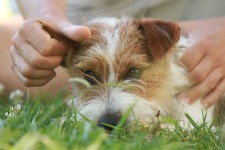
TTouch Training for Companion Animals
Tellington TTouch® Training for Companion Animals in Jefferson, MD
Three-day Workshop May 17th – 19th, 2024
Schedule:
Day 1: 10:00 AM-5:00 PM
(Arrive by 9:45 AM to get settled)
Days 2: 9:00 AM–5:00 PM
Day 3: 9:00 AM–3:00 PM
Tuition: $595
A $300.00 deposit is due at the time of registration to hold a space in the workshop. The balance is due April 5th, 2024. Early-bird discount: Pay in full by March 1st and receive $55.00 off.
Please note, if you pay your deposit with a credit card, any balance due will automatically be charged to the same card thirty days before the start of class unless you have already paid the tuition in full or let us know that you wish to use a different method of payment.
Three ways to Register:
• Online below
• Call our office to pay with your Visa, MasterCard, American Express, or Discover card
• You can also pay through PayPal. Our account is forum@tellingtontraining.com.
Cancellation Policy: Tellington TTouch Training reserves the right to cancel a session if necessary
because of circumstances beyond our control or when enrollment is deemed insufficient. In this case
all payments you have made will be refunded – whether deposit only or the full tuition amount.
Participant Cancellation Policy: For cancellations made more than 30 days in advance of the training,
a refund will be given minus a $100 administrative fee. No refunds are given for cancellations made less
than 30 days prior to the start of the training, but you may apply this money to another training that
must be attended within one year of your cancellation date.
Animals attending the Training: Dogs and/or other companion animals are welcome to accompany
you to the training for as many days of the class as you wish, but you must let us know in advance at the
time you register as we have a limit on the number of dogs who can participate.
If you would like your dog or other animal companions to attend, you will need to register her/him
with an Animal Profile form. ttouch.com/profiles/dog-profile/
The form should be completed and submitted to us no later than one month prior to the start
of the training.
You can register more than one dog for the class, but due to space constraints, only one dog at a
time may participate with you during each day of the training. If there is a question about your animal companion, the instructor will contact you. Assume that your animal may attend unless you are
otherwise notified.
If your dog will be attending, bring:
Crate, x-pen, or at minimum a mat or rug
Water bowl, food & treats
Evidence of up-to-date vaccinations or titer
Collar with ID tag, lead, and any head halter or harness you may be using
Help us maintain good relations with our training facilities and partner hotels by:
• respecting guidelines and restrictions on the number and size of animals per participant/per
hotel room;
• safely containing your animal when you are not supervising them;
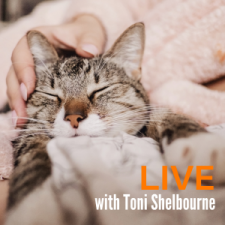
Interactive & Online Getting in TTouch® with Your Cat

On November 10th and 24th (16.00 – 18.00 GMT/ 11:00 – 13:00 EST) join Toni Shelbourne, Tellington TTouch Instructor, author and Animal Behaviourist, takes you through the steps to begin understanding and interacting with your cat in a more positive, mindful, and proactive way.
Learn how to notice subtle changes and communication signals that you cat is trying to convey to you and understand how you can adjust and adapt your approach to each individual animal. This course includes 4 hours of live, interactive, virtual learning AS WELL AS, online course material, available to you 24/7 with lifetime access.
Taking what you observe, discover the versatile and adaptive TTouch body work techniques that allow you to make positive contact with your cat, in a way they enjoy and look forward to; deepening your bond and helping your feline friend become more comfortable and relaxed.
In addition to simple yet effective TTouch techniques, discover fun, interactive exercises that will engage your cat and help transform apprehension or indifference into curiousity and engagement.
Use your new skills in practical applications, learning how to help your cat become more comfortable in typically challenging everyday handling scenarios such as, Vet visits, nail trimming, and more!
This course can count (4 Academy credits) towards the Tellington TTouch Practitioner Program.
The Live Interactive portion of the course includes:
- 4 hours of live learning sessions in a small, friendly group setting.
- Access to an exclusive Facebook Group for ongoing questions and feedback
- Recorded sessions for future viewing
- Individualized advice and coaching about your specific cat.
- Private Whatsapp group.
The online portion of the course includes:
- 3 Lessons: Each consisting of several specific topics.
- Over an hour of “how-to” videos and lectures about each specific concept and exercise
- Downloadable 40 page Course Manual
- 24/7 access to all materials
Check out the time zone converter for the course time in your area.
(shelter and rescue workers are entitled to a discount)
ttouch.ca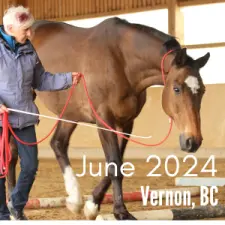
Hands On - Tellington TTouch® for Horses
Are you seeking news way of understanding or working with horses?
Would you like to learn low-stress, effective, safe and innovative techniques and exercises that can be integrated into what you already know and do?
Do you want to enhance the relationship you have with your horse?
Discover how the Tellington TTouch Method will improve performance, well-being, and behavior while enhancing the relationship with your horse on the ground and in the saddle.
This intensive hands-on course will give the tools of observation, bodywork, groundwork, and an introduction to riding concepts that will help you understand and communicate with every horse you work with.
In addition to Tellington TTouch principles we will be exploring the use of Wendy Murdoch’s “Surefoot Equine Stability Program” with a variety of Surefoot Pads and touch on Peggy Cummings’ Connected Riding concepts for body-awareness exercises that can be taken into everyday life, in and out of the saddle.
Enjoy the positive, fun filled learning environment that helps you understand and connect with horses in an all encompassing, whole, way. This workshop can serve as an introduction to the Tellington TTouch Method for Horses or as a way to build and refine the skills of more experienced students.
Choose from 2 different course options:
3 day introductory option for students new to the work and looking to add some tools to their everyday handling
5 day intensive option for students looking to deepen their understanding and refine their skills. The 2 extra days can be tailored to individual interests and learning needs.
Can count to credit for Tellington TTouch Practitioner credits suitable for new and returning students
Tuition (2 Options)
3-Day: $755 plus 5% GST (8 credits)
EARLY BIRD (Ends December 31, 2023) $650 plus 5% GST
5-Day: $1175 plus 5% GST (12 credits)
EARLY BIRD (Ends December 31, 2023) $950 plus 5% GST
Included in tuition is access to our Online Course – “Tellington TTouch for Horses – An Introduction”. $49.94 USD VALUE
Snacks, lunches and refreshments are included.
Learn more about the Facility and Accommodations.
For cancellations made more than 30 days in advance of the training, a refund will be given minus a $100 administration fee. No refunds are possible for cancellations less than 30 days prior to the start of the training, unless we can fill your spot. In some cases credit can go towards subsequent events.
We recommend that you purchase flight and hotel insurance for each event for which you register.
All prices are quoted in Canadian Dollars
ttouch.ca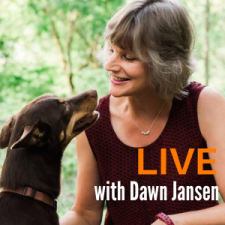
Interactive & Online Tellington TTouch for Dogs

Are you a dog lover?
DO you want to help your dog become a calm companion?
Have you recently added a rescue or shelter animal to your family?
Do you have a dog who needs a little extra support or has some specific challenges?
Maybe you simply want some positive, mindful ways to be with your animal.
Join Dawn Jansen (Tellington TTouch Instructor), weekly, starting March 2nd and learn trust-based, gentle, effective and supportive techniques from the comfort of home. This includes 10 hours of live, virtual, group instruction and 24/7 access to a self-paced online study course.
Discover techniques designed to cooperatively:
✅ Help your dog be their BEST selves!
✅ Enhance self-control
✅ Develop good leash habits
✅ Reduce anxiety & fear
✅ Address reactivity
✅ Support senior & special need dogs
✅Develop trust & Communication
TTouch offers simple, gentle, and effective ways to help your dog become more comfortable, self-controlled, and cooperative.
You will learn how to:
➔ Interpret your dog’s behavior in a non-judgmental way
➔ Notice a dog’s subtle body language for signs of stress or relaxation
➔ Use simple, relaxing body work techniques to support your dog and your relationship
➔ Support your dog to reduce anxiety and enhance self-confidence
➔ Incorporate leash exercises to create more harmonious on-leash communication
➔ Recognize and acknowledge how your own state of mind will affect your dog
This workshop includes:
10 hours of LIVE, interactive instruction via Zoom
Instant, life-time access to the online course, “Tellington TTouch for Dogs: An Introduction” for solid foundation of knowledge and accessible review opportunities.
Supportive Study Group Access
*This course counts as 10 CEU’s for PPAB (PPG) and NAODI as well as 6 credits towards becoming a Certified Tellington TTouch Practitioner.
Register and gain instant access to an extensive, clearly laid out and detailed online course. This course can be done at YOUR OWN PACE, before or after the LIVE sessions.
During these sessions, Dawn will expertly guide you on how to adapt the Tellington TTouch techniques and exercises to your own specific animals and even your self! Each session is recorded for future viewing and learning OR as catch-up, in case you miss the livestream.
This course is suitable for dog guardians who are interested in the method to enhance their relationship. All levels of experience and areas of interest are welcome. This approach integrates easily into positive dog training methods.
Students will have immediate access to online material to cover at their own pace. The online portion of learning consists of a logical, linear, “Tellington TTouch Method for Dogs: An Introduction”, which can be accessed at any time.
The online portion of the course includes:
8 Lesson Modules: Each consisting of several specific topics.
Over 24 “how-to” videos and lectures about each specific concept and exercise
Easy to follow mind maps
24/7 – lifetime access to all materials
ttouch.ca
Hands On - Tellington TTouch® for Dogs
Want a calm, confident canine companion?
Looking for the skills to have more enjoyable, relaxing walks on leash?
Maybe you just want to add to your existing skills?
Enjoy the positive, fun filled learning environment that looks at dog training in an all encompassing, whole, way. This workshop can serve as an introduction to the Tellington TTouch Method for Dogs (and other Companion Animals) and build and refine the skills of more experienced students.
Professionals dog trainers and dedicated dog guardians alike will benefit from the variety of practical techniques and unique approaches learned in this class! Add layers of knowledge and skill to what you already to well and discover new ways of understanding and handling that you can integrate into your current program to achieve remarkable results.
During the session you will learn, develop and build on the fundamentals of Tellington TTouch Bodywork, Leash work, and Observation skills.
These skills will empower you with a variety of innovative techniques and exercises to help address the most common issues confronting dog owners, trainers, and other professionals; in a forward thinking, low-stress, positive manner.
This is an ideal method to help enhance positive dog training modalities. Bring your own dog or work with one at the course. There may be an opportunity to work with other species, such as horses, in a safe, confidence building way.
Can count to credit for Tellington TTouch Practitioner credits (8 or 12 credits), suitable for new and returning students.
Tuition
3-Day: $775 plus 5% GST
EARLY BIRD (Ends December 31, 2023) $650 plus 5% GST
5-Day: $1175 plus 5% GST
EARLY BIRD (Ends December 31, 2023) $950 plus 5% GST
Included in this course is our Online Course – “Tellington TTouch for Dogs – An Introduction”. $49.94 USD VALUE
Snacks, lunch and refreshments are included in the price.
Learn more about the Facility and Accommodations.
For cancellations made more than 30 days in advance of the training, a refund will be given minus a $100 administration fee. No refunds are possible for cancellations less than 30 days prior to the start of the training, unless we can fill your spot. In some cases credit can go towards subsequent events.
We recommend that you purchase flight and hotel insurance for each event for which you register.
All prices are quoted in Canadian Dollars.
ttouch.ca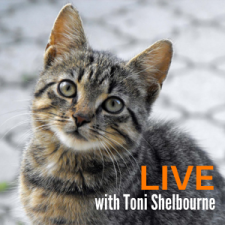
Interactive & Online Getting in TTouch® with Your Cat

On April 14th and 28th (16.00 – 18.00 GMT/ 11:00 – 13:00 EST) join Toni Shelbourne, Tellington TTouch Instructor, author and Animal Behaviourist, takes you through the steps to begin understanding and interacting with your cat in a more positive, mindful, and proactive way.
Learn how to notice subtle changes and communication signals that you cat is trying to convey to you and understand how you can adjust and adapt your approach to each individual animal. This course includes 4 hours of live, interactive, virtual learning AS WELL AS, online course material, available to you 24/7 with lifetime access.
Taking what you observe, discover the versatile and adaptive TTouch body work techniques that allow you to make positive contact with your cat, in a way they enjoy and look forward to; deepening your bond and helping your feline friend become more comfortable and relaxed.
In addition to simple yet effective TTouch techniques, discover fun, interactive exercises that will engage your cat and help transform apprehension or indifference into curiousity and engagement.
Use your new skills in practical applications, learning how to help your cat become more comfortable in typically challenging everyday handling scenarios such as, Vet visits, nail trimming, and more!
This course can count (4 Academy credits) towards the Tellington TTouch Practitioner Program.
The Live Interactive portion of the course includes:
- 4 hours of live learning sessions in a small, friendly group setting.
- Access to an exclusive Facebook Group for ongoing questions and feedback
- Recorded sessions for future viewing
- Individualized advice and coaching about your specific cat.
- Private Whatsapp group.
The online portion of the course includes:
- 3 Lessons: Each consisting of several specific topics.
- Over an hour of “how-to” videos and lectures about each specific concept and exercise
- Downloadable 40 page Course Manual
- 24/7 access to all materials
Check out the time zone converter for the course time in your area.
(shelter and rescue workers are entitled to a discount)
ttouch.caEvents > Past Events Archive
Interactive & Online Tellington TTouch for Dogs: Intro
$129.99 – $179.99
Join Jyl Hershman- Ross (Tellington TTouch Senior Practitioner), Friday, November 10 (5-7 pm CT) & and Saturday, November 11 (4-7 pm CT) and learn effective, mindful and positive ways to help successfully introduce a new pet into the home.
Are you thinking about adding another animal companion into your home, but worried about integrating that animal into your current pack?
Perhaps you have had a problem with pack dynamics before?
Or you just want to learn a little more about helping integrate shelter animals into new home?
Jyl will introduce practical and effective Tellington TTouch as well as common sense positive, reward based training techniques to help new and old pets live together.
Develop trust & communication and discover simple, gentle, and effective ways to help your dog become more comfortable, self-controlled, and cooperative.
You will learn how to:
➔ Interpret your dog’s behavior in a non-judgmental way
➔ Notice a dog’s subtle body language for signs of stress or relaxation
➔ Use simple, relaxing body work techniques to support your dog and your relationship and their role in the household with other animals
➔ Support your dog to reduce anxiety and enhance self-confidence in a new home
➔ Recognize and acknowledge how your own state of mind will affect your dog
This workshop includes:
- 5 hours of LIVE, interactive instruction via Zoom
- Access to all session recordings for future review
- Instant, life-time access to the online course, “Tellington TTouch for Dogs: An Introduction” for solid foundation of knowledge and accessible review opportunities.
- Supportive Study Group Access
This course counts as 9 CEU’s for CCPDT as well as 4 credits towards becoming a Certified Tellington TTouch Practitioner.
Register and gain instant access to an extensive, clearly laid out and detailed online course. This course can be done at YOUR OWN PACE, before or after the LIVE sessions.
During the LIVE Zoom sessions, Jyl will expertly guide you on how to adapt the Tellington TTouch techniques and exercises to your own specific animals and even your self!
The class is small and allows for individualized advice and attention. You will love the supportive, caring, community of animal lovers! This course is suitable for dog guardians who are interested in the method to enhance their relationship. All levels of experience and areas of interest are welcome. The Tellington TTouch approach integrates easily into positive dog training methods.
Students will have immediate access to online material to cover at their own pace. The online portion of learning consists of a logical, linear, “Tellington TTouch Method for Dogs: An Introduction”, which can be accessed at any time. The online portion is not specific to integrating a new animal into the home but serves as a foundation for the techniques and exercises described in the live, interactive sessions.
The online portion of the course includes:
- 8 Lesson Modules: Each consisting of several specific topics.
- Over 24 “how-to” videos and lectures about each specific concept and exercise
- Easy to follow mind maps
- 24/7 – lifetime access to all materials
Interactive & Online Tellington TTouch®
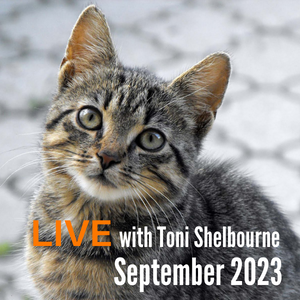 Getting in TTouch with Your Cat with Toni Shelbourne
Getting in TTouch with Your Cat with Toni Shelbourne
On September 10th & 17th (16.00 – 18.00 GMT) join Toni Shelbourne , Tellington TTouch Instructor, author and Animal Behaviourist, takes you through the steps to begin understanding and interacting with your cat in a more positive, mindful, and proactive way.
Learn how to notice subtle changes and communication signals that you cat is trying to convey to you and understand how you can adjust and adapt your approach to each individual animal. This course includes 4 hours of live, interactive, virtual learning AS WELL AS, online course material, available to you 24/7 with lifetime access.
Taking what you observe, discover the versatile and adaptive TTouch body work techniques that allow you to make positive contact with your cat, in a way they enjoy and look forward to; deepening your bond and helping your feline friend become more comfortable and relaxed.
In addition to simple yet effective TTouch techniques, discover fun, interactive exercises that will engage your cat and help transform apprehension or indifference into curiousity and engagement.
Use your new skills in practical applications, learning how to help your cat become more comfortable in typically challenging everyday handling scenarios such as, Vet visits, nail trimming, and more!
This course can count (4 credits) as an Elective towards the Tellington TTouch Practitioner Program.
visit this website for more info
TTouch for You: Inspiring Self Care
Connect With The Magical Intelligence Of Your Body
Tellington TTouch® is a simple, proven method of touch that has been used to improve the lives of thousands of people and animals throughout the world.
Learning TTouch® for Self-Care.Releasing anxiety and pain with TTouch® and gratitude.A supportive community sharing TTouch® in a global online setting.Connecting to the Creative Life Force in every cell in your body.The merging of science and spirituality.
This program offers credits for those looking for TTouch For You practitioner status. To learn more email kirsten@ttouch.com.
In this online, interactive course, you’ll discover what thousands have already experienced first-hand: the life-changing power of Tellington TTouch®!
$89/month or $979/yr
Dates and Times of Live Training Classes:
Each Class is 3 hours, and all classes are on Sundays at: 10:00 am Pacific Time / 11:00 am MT / 12:00 pm CT / 1:00 pm ET BONUS Weekly ‘Live With Linda’ Tuesdays each week at 11am -1 pm Pacific
Details and RegistrationOur Method for > Dogs > Success Stories
Dog Show
Face, a Reluctant Show Dog
by Practitioner Kathi Lehman.
Face, a longhair standard Dachshund, came to TTouch® as a Champion show dog. Vicki and Bruce Walsh were Face's owners and breeders. The Walshes have bred and shown dogs for thirty years. They had tried all the normal show dog training and socialization with Face, but while he was champion, he had developed bad behavior patterns.
Face had managed to finish his championship, but he was afraid of everything. He is an exquisite dog, but he is very nervous. At times, Face would totally loose it in the ring, and it would be everything Bruce could do just to hang on to him. He was very afraid of loud noises and would go into freeze at times. Face did not ever eat very well and was a very poor traveler. If Face had a "good" day and managed to win, he would totally refuse to walk on to the winners' platform to receive his award or have his photo taken.
Bruce brought Face to me ready to give up on Face as a show dog. My assessment was that Face was very tight in his stomach area and generally not very present. Face was very sweet but did not make any kind of contact really with anyone.
I used a body wrap and a Halti on him. When Face had his TTouch® "clothes" on we just walked around for about three minutes. Many performance dogs have been over stimulated by their dog jobs and sometimes very short easy sessions are the way to begin a breakthrough with them. I also did a short basic session of Clouded Leopard TTouches and mouth work. I used a pressure of about a three with the TTouches. His tail was limp, so I did some gentle tail-work as well. Then we took a break of about an hour.
We let Face wander around mv place, visit with other dogs and wear his body wrap in this very relaxed situation. He wore his body wrap for about 15 minutes. He then had about an hour to relax and process his first session.
I then put the Halti back on and the body wrap back on and gave Face some food treats. We very slowly did the labyrinth. At first, Face was very nervous, and I used a wand to coax him along with me. We then put him into the Homing Pigeon and lie was a bit more confident with Bruce as the leader. When we added the platform, Bruce commented that Face would never go up on that. Using the Homing Pigeon, wands and bits of food treats, we managed to get Face to climb up on the platform. I then did another ten-minute session of bodywork and Face went home.
Bruce brought Face back the next weekend and we began with the same light bodywork. Face was still very tense in his body with his gut area really feeling like a knot. Face had a much easier time with the confidence course this time. We added his stepping over a couple of low poles. These low poles are made by cutting swimming pool noodles in half. At first, stepping over something was very hard for Face, but he managed. My hope was that by asking him to pick up his feet tjat he would become more aware of his feet and his body.
Face went to a dog show the next weekend. He did better. Bruce felt he was calmer and more responsive. He won and he was willing to walk up the little ramp and take his ribbons. Bruce was also able to get a photo of Face standing on the little platform and that was another first.
The Walshes live two hours from me. They wanted Face to have more TTouch sessions, but the drive was a bit much. I offered to take Face for a week of TTouch camp. I repeated the sessions as described above. I added an evening session of slow gentle bodywork including Raccoon TTouch and lots of TTouch mouth-work. It took four sessions before Face seemed to have a real relaxation response. I did not really think any true progress had been made, but he was a nice dog and I had enjoyed working with him.
Face went home. The first call I got was asking me what I had done to make him eat. The Walshes had not mentioned the issue with Face eating, so not only had I not done anything, but also, I didn't even know it was an issue! I had just fed him, but I had done a bit of TTouch on him prior to each meal because I was trying to maximize our week.
The next week, Face went to the dog show. He did very well. He was more relaxed than ever. He even ate little treats called bait in the ring.
The Walshes asked me to work on Face at a dog show. I did a couple of sessions on Face at nearby dog shows. These sessions included some bodywork prior to his being groomed for the ring. I did note that his tail did not feel as disconnected anymore. Hoever, his stomach area was still tense so I did Abalone TTouches on that area with a very slow lift at the end.
I went to ringside and used the lines on the floor to make a little labyrinth. Prior to asking Face to walk forward in our invisible labyrinth, I did a few circles on his rump above his tail. Then as we started out, I did a little flicking TTouch like the horse-leading position and Dingo to encourage him move out and use his rear legs. This warm-up seemed to work quite well. In the ring, Bruce would do light mouth-work on the outside of Face's lips prior to the judge examining Face.
Face has gone on to learn to enjoy his job as a show dog. He now lives with a very nice handler, Loreen Hogan. Loren keeps Face as a house dog when he is not at the shows and they have bonded very well. I taught Loreen some TTouches and she has continued his sessions. Face became the number one ranked Longhair Standard Dachshund for 1999.
Our Method for > Horses > Attend a workshop > Read More
One Horse - One Human at a Time
When we attend a TTouch training we arrive with excitement and wonder. The common bond that all of us share and the one that attracts us to Linda’s work, is that we each believe, in our own way, that there must be a better way to be with horses, other animals, the people in our lives and with the world in general.
The knowledge learned from the Tellington TTouch Method for Horses work is accumulative. In the beginning, it seems simple and easy. As we continue year after year to learn more of Linda’s shared skills, from clinics, workshops, CD’s, and her books, we begin to see a complete metamorphosis in our approach to riding, training and in many ways, to our interactions with other people as well. At a time of such great need for balance in the world and in our personal lives, by becoming TTouch trained, we become part of the change.
Linda’s life philosophy is woven like a rich quilt and openly shared at her clinics. During the daily lunch break she shares ideas about thought provoking books and theories that open all of the participants to see that we all have unlimited potential. For most of us, there is a recognition that horses can be our teachers.
At Linda’s five-day clinics, many of us notice a personality pattern expressing itself as we work with our horses—our horses mirror this pattern back to us, many times it appears to be the root of the problem that we seem to be having with our horses, and yet it is a problem that we have in other aspects of our lives, too. The horses keep giving us an opportunity to not only get it right, but to get it better. At a recent workshop, there was a horse that was very pushy with its person. As the days went on, the person revealed how primary people in her life did not treat her with respect either. As she learned techniques to express her boundaries to her horse, she also had an awareness of different ways of being with humans in her daily life.
The work that Linda teaches at her clinics is far beyond horse training. Linda shares with her students the richness of her life journey with humans and with animals that she has finely tuned over the past fifty years. A woman always ahead of her time, she gently and humbly shares her knowledge with everyone present. The attendees at her horse clinics are of varied backgrounds from trainers, competitors, therapists, medical professionals, NARHA instructors, backyard horse owners and anyone with a desire to share with a horse in a more compassionate way. Whatever a person’s knowledge base is, Linda has a way of speaking and sharing examples directly so that they are easily understood and absorbed.
The variety of touches, leading positions, special riding equipment and connected riding techniques offer everyone something new and thought provoking to encourage and stretch skills, from professional trainer to horse lover. A questionnaire was sent to participants from a recent clinic. Christal Bannister, a massage therapist, answered, “I learned to touch a horse (and people) in a new way. I learned how to be soft and effective with the touches. I learned also how to be direct, observe and to give clear signals.”
The TTouch method offers us possibilities of dealing with our horses in an entirely different way. The depth of Linda’s work supports humans in continuing to unravel the myth of domination and ignorance in our relationship with our equine partners. When attending a five-day workshop, it is truly joyful to see horses and humans develop new ways of interacting together. In western civilization where horse ownership, racing, showing and winning have guided most peoples training background, it is so refreshing and important that we now have a choice.
Because of work like Linda’s Tellington TTouch Method, we have an opportunity to see, to learn, to try and to succeed in improving the lives of our horses and at the same time improving our lives as we see that compassion, listening, honoring and thought out techniques are available to everyone. An attendee at a recent clinic, Kathleen Aspenns wrote, “I really like seeing Linda work with challenging horses---to see what to do when they don’t like the first ten things you try---keep trying something different. Linda’s work in heartfelt—I absolutely love her respect for and her communication with the horses. It inspires me to be a more compassionate person.”
Linda and all the Instructors, support each student and help all of them to embark on their own journey filled with all of the skills that she can possibly share. TTouch work is not only about changing the way we deal with horses, it is about changing the way we see, hear, listen and deal with our lives . . . changing the way we are with each other, one horse, one person at a time.
Our Method for > Horses > Success Stories
Professional trainer impressed!
"This TTouch Training showed me:
effectiveness in changes
new realizations
confidence
philosophy
strength to be “weird”
appreciation and honor to all animals - we are all the same at cell level.
"At the end of this week-long training (my 6th or 7th, I think), I am once again struck by how powerful the TTouch method is. The combination of the TTouch body work, the ground work and leading, and the overall philosophy creates overall changes in the horses and in the people working with them. I have never seen this in any other system in my 25 years of working with animals.
"These competitive event horses began with very obvious problems: stiffness, short-strided, uneven gait, high headedness, dragging the rider to the jumps, kicking, biting, unwillingness, lack of attention. In every case there was dramatic improvement.
"We were fortunate to have top level riders who showed us their horse being led and being ridden nearly every day. This allowed us to see the changes in the horses after being worked each day by the clinic participants. It also allowed us to see the riders soften and ride more correctly after using the specialized TTouch equipment in their riding sessions. It was a joy to observe the riders' pleasant surprise as the horses became easier and more enjoyable to ride.
"After working as an animal professional for almost 20 years, I was so impressed by Tellington TTouch effectiveness. In the years since then, I’ve used it more and more in my work. I continue to learn better ways to work with animals through TTouch trainings and to be constantly amazed by the changes the TTouch method for horses brings about.
- Penny Stone
Shop > Horses > Books
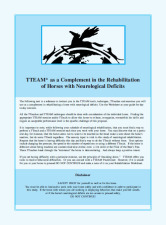
Rehabilitation of Horses - Booklet
Useful techniques to help your horse recover from neurological deficits including EPM.
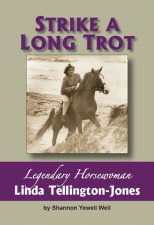
Strike A Long Trot: Legendary Horsewoman Linda Tellington-Jones
This book chronicles the distinguished early equestrian career of Linda Tellington-Jones.
Shop > Horses > Equipment
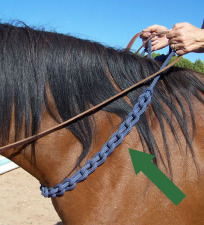
Balance Rein - Braided
Used for horses who are above the bit, behind the vertical or strung-out.
Shop > Horses > Videos and DVDs
Shop > Humans
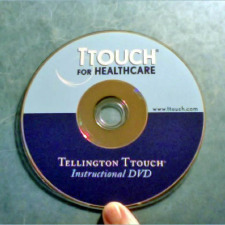
TTouch® for Healthcare - a Tellington TTouch® Instructional DVD
New! Especially for You! TTouch® for Healthcare Instructional DVD
Worldwide > Animal Ambassadors International
1990 TTouch for Developmentally Delayed Students
TTEAM News International Back Issues, 1990 Pp. 91-92
TTEAM Practitioner and Educator Erika Hull works with a class of Developmentally Delayed students (ages 12 -21) in Bracebridge, Ontario. She has taken a number of week-long TTEAM Trainings with Linda Tellington-Jones and Robyn Hood. She also owns and rides two horses and has a dog and two cats.
About eight years ago, first used the Tellington TTouch on one student who was totally out of control - the student was screaming and could not sit or stand. In "self defense" Erika did a few light-pressured Clouded Leopard circles and the screaming eased while Erika was doing the circles. Since that time, the use of TTouch in her classroom has become, in her words, "a way of being" that is integrated into the rest of her teaching. However, with some students, she may spend a little more time to deal with specific problems.
In January, 1990 I visited Erika to observe, video, and write about some of these special cases, so that they could be shared at the first Tellington TTouch Workshop for Humans held at Esalen Institute in February 1990.
David (not his real name)
He came to Erika's class at the age of 12 years suffering from Cerebral Palsy. At that time, he was violent and disruptive. He had no friends, did not talk, did no work, and had to wear diapers. His head moved constantly, he could not see anything, and was unable to focus. Go could not straighten his arms, and they were always on his chest. He was unable to feel heat, cold or pain.
Erika told him that if he wanted to remain in her classroom, he had to be smart like everyone else, and that his brain was the boss. She began TTouch by working on his arms and hands with the Clouded Leopard, doing Noah's March down both arms, and telling him that he had a telephone connection from the brain to his fingers. This was the "beginning of a new life" as Erika puts it, "he began to get an idea of where his body was."
Two years ago, a hamstring operation was done and his legs were in full casts (from the hip to the toes). His mother was told by the doctors that he would never have sensation or movement in the toes. Erika did Clouded Leopard and Raccoon circles on his toes, working on him for about 20 minutes each day for six weeks while he was in the casts. After the casts were removed, she did circles over the feet and legs. To help him stand, she put his feet in high ski boots. She used the wand to direct the brain signal from the head to the foot, and he is now able to wiggle his toes. He is also able to stand without the ski boots and instead of 100% of his weight on the heels, it's now 60% on the heels and 40% on the toes. He is now able to walk without assistance. By doing TTouch down the outside of the leg David is beginning to be able to turn his feet straighter (instead of out), and is able to walk backwards.
To assist David with his writing and improve his eyesight, Erika did TTouch circles on David's temples. He has learned his letters and numbers, and is now able to write them. He has become very social, has many friends, and can have a sensible conversation with people. He can dress himself, is able to use a urinal, and doesn't wear diapers any more. During the TTouch work, a great deal of emphasis was placed on breathing - because the breathing helps to "unfreeze the neural impulses that direct the muscles". Erika says that David is now one of her host students.
Tara
She has been in Erika'a Class for 1 & 1/2 years. It the beginning she had no speech, and had so little strength or balance that she was unable to got on the school bus. Her speech problem was related to an inability to take air into the lungs. She was unable to rotate her spine, which interfered with her washroom activities . TTouch was done on her feet and legs to improve their strength and she is now able to get on a ladder.
When first TTouched on the back, four months ago, Tara gasped, due to extreme sensitivity probably caused by inflammation of nerve endings. Very light Python Lifts and Raccoon touches were done all over her back to help improve her breathing and enable her to rotate her spine. Tara can now be TTouched all over her back with the Abalone without feeling any discomfort and can use the washroom. Her parents are very pleased with the changes in her.
Bill
Bill was expelled from every school and every school bus due to violent behavior. (e.g. throwing a VCR through the window). His Ontario Student Record is 1" thick with incidents. He was placed in Erika's class in November 89. At the beginning, Erika did not use the TTouch on him, but she used the TTEAM Philosophy of offering alternatives instead of force, as she had learned in TTEAM horse clinic. Whenever force, (in the form of coercion) had been used with Bill, he had exploded (as some horses will). When offered alternatives, he began to be able to cope.
More recently (March, 90) Erika began doing the Python and Butterfly on his arms and hands (his hand would shake,, and he had difficulty writing. She also used Tarantulas Pulling the Plow and Lick of the Cow's Tongue on his back; sometimes she only does Noah's March. If Bill receives some TTouch twice a day, his behavior is acceptable, and he is beginning to be helpful with other students. It seems that Bill possibly suffers from the opposite of tactile defensiveness - he becomes sick if he is not TTouched. When he first came to the class, he could not use the computer with his hands, but would use his nose instead. In March, he began to use the computer with his hands. When the TTouch is done on his arm and hand, he will write. He was not able to do this six months ago.
Erika continues to integrate the TTEAM philosophy and TTouching her students. She has also maintained a delightful sense of humor as she works in situations which can be stressful.
NOTE: TTEAM is an acronym of "Tellington TTouch Equine Awareness Method." Since this article was written, Linda decided to use a brand name for all the facets of the TTouch organization. Currently, that is Tellington TTouch.
